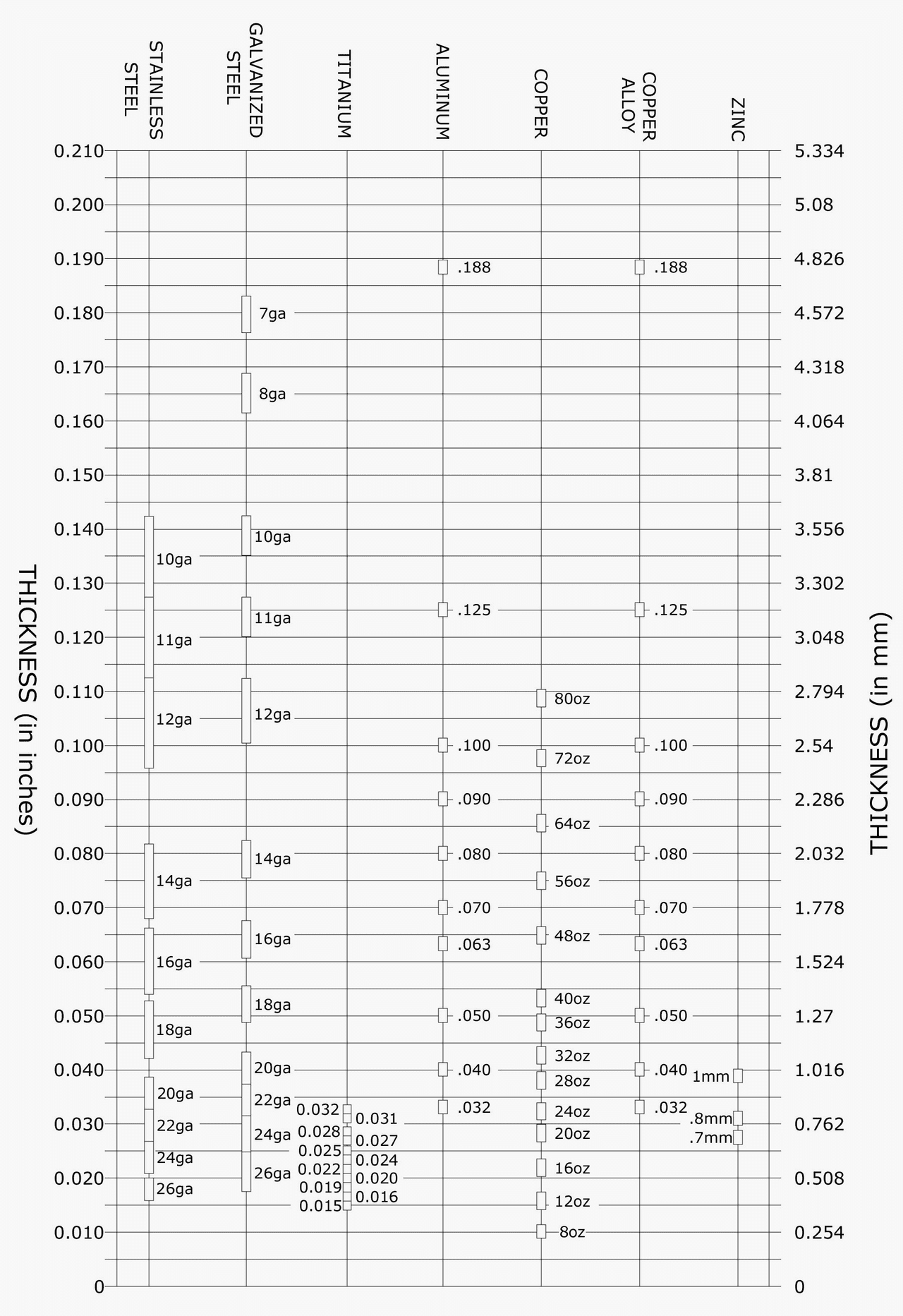The thickness of sheet metal starts from 0 5 mm and goes up to 6 mm.
Sheet metal standards thickness.
A gauge conversion chart can be used to determine the actual thickness of sheet metal in inches or millimeters.
Gague are used to specify the thickness of a metal sheet.
Please note that astm states in specification astm a480 10a the use of gage number is discouraged as being an archaic term of limited usefulness not having general agreement on meaning.
This is known as the manufacturers standard gage for sheet steel.
Sheet metal gauge thickness chart 2019 10 24t01 36 33 00 00 when working with sheet metal the term gauge is often used.
Anything above that is a metal plate.
Stainless steel is 0 105 thick aluminum is 0 080 copper is 0 108 and brass is 0 081.
For example 18 gauge steel according to a gauge conversion chart is 0 0478 inch or 1 214 millimeter.
The thickness of sheet metal is commonly specified by a traditional non linear measure known as its gauge.
The gauge number 18 holds no relevance to the actual measurements.
It is important to know that the gauge thicknesses also vary depending on the type of sheet metal being referenced.
Take for instance 12 gauge thickness across the material types listed below.
Thus a 10 gauge steel sheet which has a thickness of 0 1345 inches will weigh 41 82 0 1345 5 625 pounds per square foot.
As the gauge number increases the material thickness decreases.
The thin sheet metal is easy to form while still providing great strength.
At a relatively cheap price it makes a great fit for most engineering purposes.

